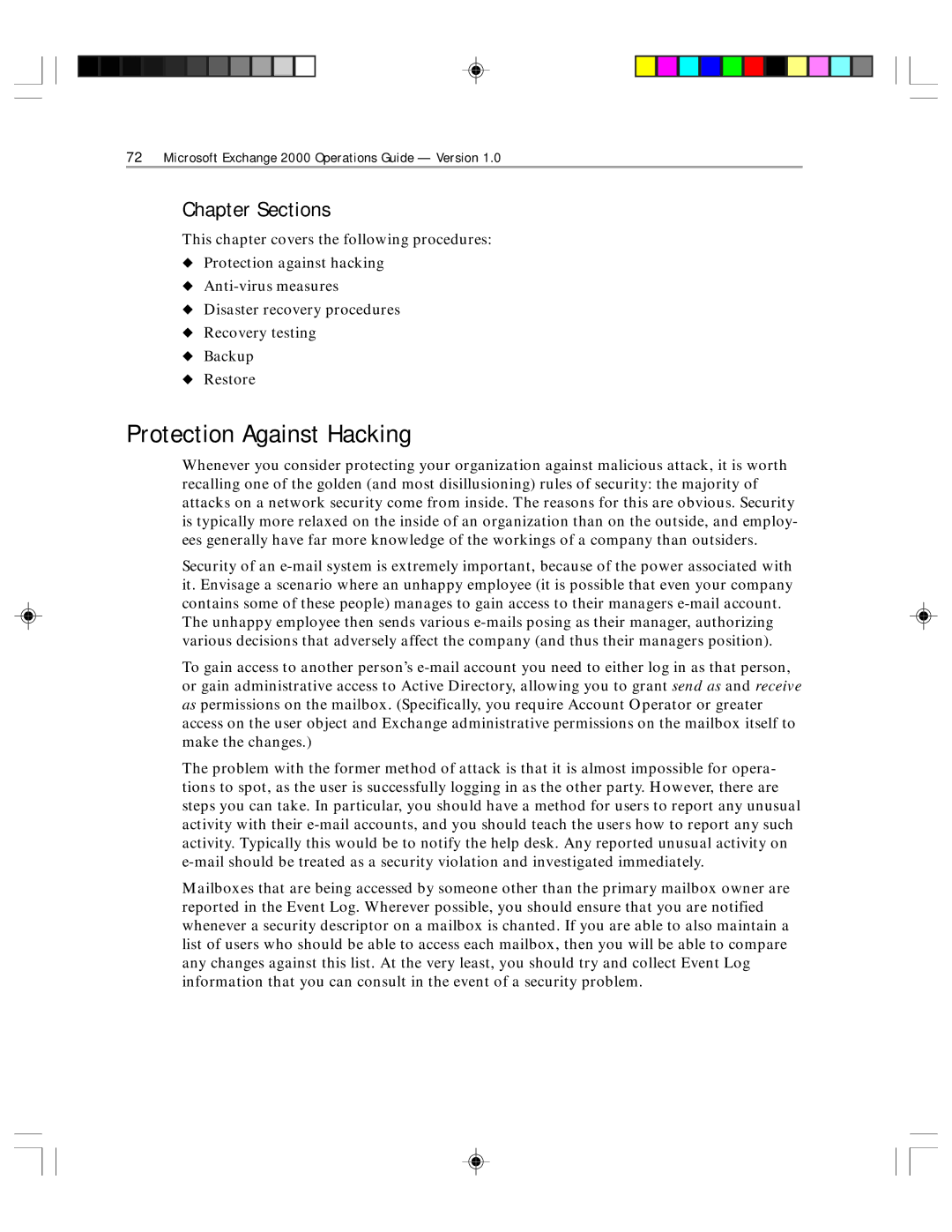
72Microsoft Exchange 2000 Operations Guide — Version 1.0
Chapter Sections
This chapter covers the following procedures:
◆Protection against hacking
◆
◆Disaster recovery procedures
◆Recovery testing
◆Backup
◆Restore
Protection Against Hacking
Whenever you consider protecting your organization against malicious attack, it is worth recalling one of the golden (and most disillusioning) rules of security: the majority of attacks on a network security come from inside. The reasons for this are obvious. Security is typically more relaxed on the inside of an organization than on the outside, and employ- ees generally have far more knowledge of the workings of a company than outsiders.
Security of an
The unhappy employee then sends various
To gain access to another person’s
The problem with the former method of attack is that it is almost impossible for opera- tions to spot, as the user is successfully logging in as the other party. However, there are steps you can take. In particular, you should have a method for users to report any unusual activity with their
Mailboxes that are being accessed by someone other than the primary mailbox owner are reported in the Event Log. Wherever possible, you should ensure that you are notified whenever a security descriptor on a mailbox is chanted. If you are able to also maintain a list of users who should be able to access each mailbox, then you will be able to compare any changes against this list. At the very least, you should try and collect Event Log information that you can consult in the event of a security problem.
